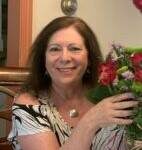 Rabbi Ezra Weinberg
Rabbi Ezra Weinberg
Parshat Shmini Atzeret
What is the modern-day lure of a holiday centralized on a prayer for rain?
Both obvious and extremely non-obvious thoughts entered my mind as I was driving home recently on I-76 in the latest torrential downpour: Water simply falls from the sky, and that divine/natural act creates and sustains us and the entire context of our existence. As we both approach Shmini Atzeret and ponder the state of the natural world in 2023, I now wonder how Jewish tradition might be urging us toward an expansion of our awareness of rain on this chag?
At first glance, our tradition is not helpful, especially in the Diaspora. On one hand, the cycles of rain and Shmini Atzeret liturgies associated are ancient-Israel specific and don’t seem to offer a blueprint outside that context. On the other hand, if we can zoom out, perhaps a compelling case for a modern-day religious connection to rain will emerge. Here are two traditions and Earth-based lenses to prepare ourselves for the coming “rain season.”
The first lees to help us widen our perspective on rain comes from a bird’s eye view of the ancient Hebrew calendar. In their own unique ways, the blueprint of each holiday is an invitation to wake up to our own miraculous existence and awareness of the natural and divine forces that allow us to exist.
Shmini Atzeret, for example, wakes us up with its rain-centric focus. But it’s not just the individual holidays themselves but the embedded structures with the ancient Hebrew calendar that call to us as well. As Rabbi Art Green notes in his book, “Judaism for the World,” the Jewish year is essentially marked by two sacred Earth-based cycles. Our spring cycle begins on Passover and ends on Shavuot. And our fall cycle begins when we start blowing shofar on Rosh Chodesh Elul all the way through Shmini Atzeret/Simchat Torah.
Both of these cycles hinge on the turning of the seasons — as if there is a sacred quality to the transition of seasons that adds an extra charge to our holy days.
This is not surprising given the way Jewish traditional daily prayer life is structured around dawn and dusk times. If the transition from day to night creates a powerful setting for our daily prayer, Kal V’chomer, (how much more so) the transition of seasons creates extra energy and excitement for the possibility of something transformative.
Shmini Atzeret is teaching us to notice the intrinsic power of our natural cycles, slowing down our lives to call out to the wisdom of the Earth in a time when the Earth is visibly active and changing in front of our eyes. These factors all serve as prayer multipliers.
The other lenses I’m proposing to expand our awareness of the centrality of rain center around the ecological significance of Shmini Atzeret. This holiday embodied high stakes like no other. Rain mattered to our ancestors and it matters now, even if most of us do not have the direct experience of being farmers. It is no exaggeration to say that rain is a “matter of life and death,” as written in the Tefillah Geshem (liturgical prayer for rain).
In her article, “Why Shmini Atzeret is the Pinnacle of the High Holiday Season,” Kohenet Sarah Chandler makes the point that our sages actually believed that all of Elul, Rosh Hashanah, Yom Kippur and Sukkot were building toward the ultimate judgment symbolized on Shmini Ateret: praying for G-d to distribute the right amount of rain and allow us to continue to live. “And so we should continue to say Tefillat Geshem,” she writes, “not because we believe that fasting and chest pounding will bring rain, but because it reminds us of the delicate balance necessary for life to thrive on this planet.”
In these unprecedented ecological times, there are no guarantees that the natural cycles we have relied upon won’t be altered. The precise balance of water needed to sufficiently feed us is not inevitable. “No matter how technologically advanced our society becomes,” Chandler writes, “life as we know it will continue to depend on sufficient rainfall.”
Jewish prayer and rituals have a reputation of being significantly out of date and disconnected from our basic lives and needs today. But what about the needs beneath the needs? What about the needs that are so basic that many of us have forgotten their place in our lives?
As a post-industrialized society, there is still a religious value in connecting to the earthly cycles that provide for all of our needs. It may just be worth our while to pray for rain. T
Rabbi Ezra Weinberg is a Philadelphia-based rabbi and a practitioner of conflict transformation. He is the founder of ReVoice: A Journey of Discovery for Jewish Families After Divorce. The Board of Rabbis of Greater Philadelphia is proud to provide diverse perspectives on Torah commentary for the Jewish Exponent. The opinions expressed in this column are the author’s own and do not necessarily reflect the view of the Board of Rabbis.





